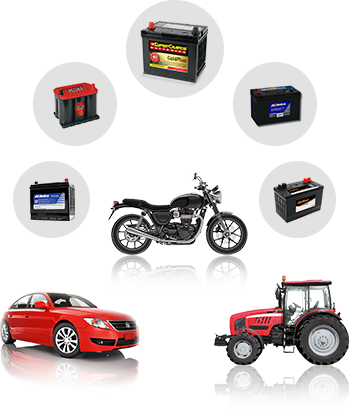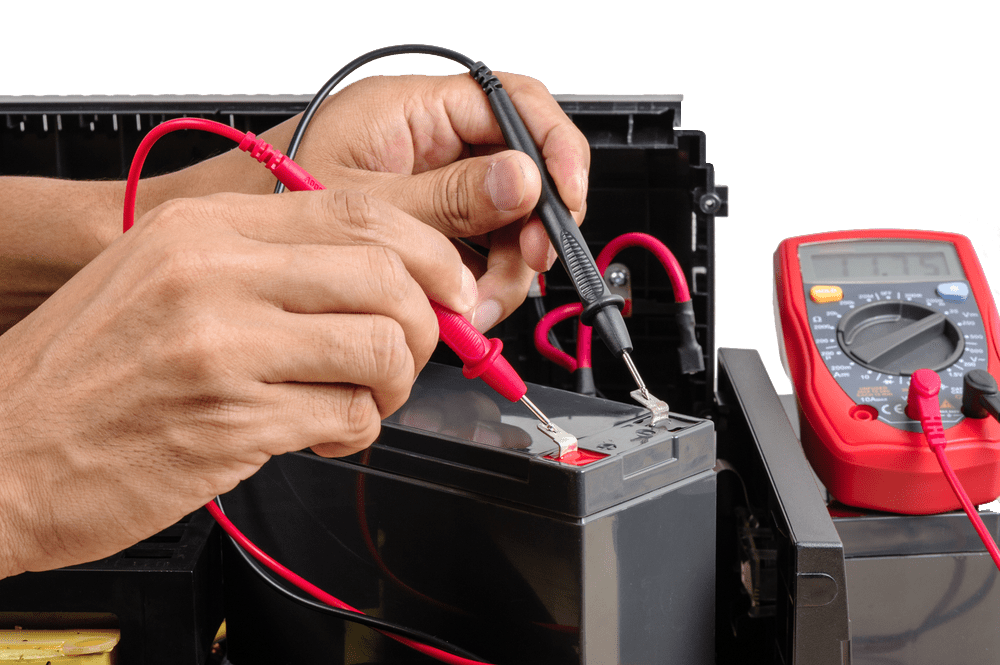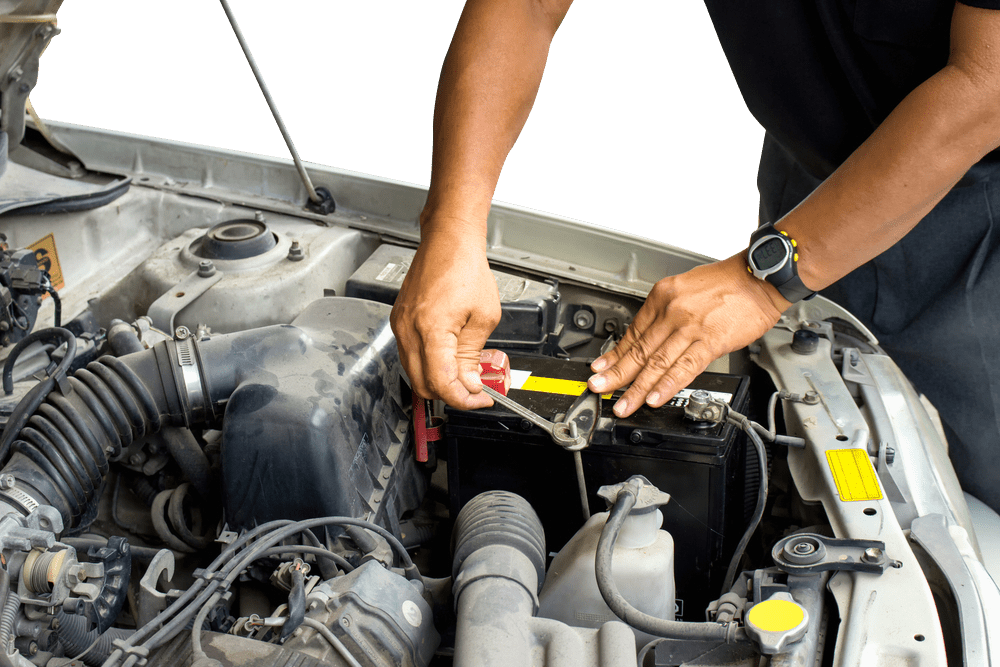Heat increases the rate of evaporation, which causes a loss of water from the electrolyte. Extreme heat also increases the rate of self-discharge and promotes the corrosion of the positive plate grids. Extreme cold dramatically reduces the speed at which chemical reaction can occur, while increasing electrolyte resistance. It is important to keep batteries at a full charge during periods of extreme cold. Those in a discharged state are susceptible to freezing, which can cause damage to the plates and container. Automobiles demand more from a battery in freezing temperatures as the motor oil thickens and makes the engine harder to crank. Heat is the number one killer of a battery. Although it increases the performance in the short-term, life is drastically reduced over time.
As most batteries today are maintenance free and fully sealed, no water or additives are required. You should, however, add water only to accessible battery types, which require regular topping up. Remember to use distilled water only and be careful not to overfill. Never use sulphuric acid.
Heat and vibration are the most harmful elements to a vehicle battery. However, many other factors can cause failure, such as: corroded cables and terminals, lack of electrolyte maintenance, sulphating, alternator/regulator malfunction, and electric shorts.
Lead-acid batteries last 42 months on average – however this figure may be reduced or extended depending on a number of factors, including:
- Whether the battery has been installed correctly.
- If the battery chosen is suitable for the vehicle and driving application.
- The climate in which the vehicle is driven.
- The voltage which the battery is usually kept at.
- Whether the vehicle has high or low parasitic drain when not in use.
- How often the vehicle is used, and the length of the journeys.
- Whether the battery and the vehicle itself have both been well maintained.
Based on these factors, batteries fitted to vehicles which are used in hot climates, driven on short journeys, and rarely maintained would be expected to have a shorter life. Conversely, vehicles which are used in milder climates, driven further, and receive regular maintenance would typically have a longer life.
No. They need a special battery specifically designed for the extra load in vehicles with the I-Stop system. This sophisticated technology requires an enhanced battery to cover this extra load. Vehicles with the I-stop feature need either an EFB (Enhanced flooded battery) or AGM (Absorbed glass mat) stop/start battery. These vehicles can start up to 18,000 times per year.
Sealed valve-regulated (SVR) technology encompasses both gelled electrolyte and absorbed glass mat (AGM) batteries. AGMs are mostly used in special applications where spill-proof / leak-proof design is required.
Yes. Recharging a wet lead-acid battery produces hydrogen and oxygen gas. While spark retarding cover/vent caps help prevent external explosions, sparks occur when jump starting, connecting or disconnecting the charger or cables and igniting the gas. Inadequate ventilation, poor connections and batteries not properly maintained may trigger causes of explosion.
No. Using a car battery to run a fridge will reduce the life of the battery and it will eventually fail. If you are running a fridge, the best option to use is a ‘deep cycle’ battery. These are designed to produce a small amount of power over a long period of time. Usually rated in Amp Hours, deep cycle batteries are designed to be drained and then recharged. Ideally you should run with two batteries, main battery (automotive) for starting the car and an auxiliary battery (deep cycle) for the accessories.
Reserve capacity is the time in minutes that a new, fully charged battery will deliver 25 amperes at 27 degrees C and maintain a terminal voltage equal to, or greater than, 1.75 volts per cell. This rating represents the time it will continue to operate essential accessories if the alternator or generator of a vehicle fails. In other terms, it is a battery’s ability to sustain a minimum vehicle electrical load in the event of a charging system failure. Under the worst conditions (winter driving at night), low beam head lamps, windshield wipers, and defroster while driving at low speeds.
CA/cranking amps determine how much power you have to start your car in most climates. The basic job of a battery is to start an engine; it must crank, or rotate the crankshaft while at the same time maintaining sufficient voltage to activate the ignition system until the engine fires and maintains rotation. This requirement involves a high discharge rate in amperes for a short period of time. Since it is more difficult for a battery to deliver power and that the engine requires more power to turn over when it is cold, the Cold Cranking rating is defined in international test standards as: The number of amperes a lead-acid battery at -17.8 degrees C, can deliver for 30 seconds and maintain at least 1.2 volts per cell-volt battery. In other words, CCA/cold cranking amps determine how much power you have to start your car on cold winter mornings.
No. New vehicles with additional accessories and equipment are designed for a calcium battery. Moreover, its charging system’s higher voltage output compared to old vehicles is designed to charge lead-calcium batteries.
A starting battery is designed to deliver several hundred amperes of power to the starter motor within a few seconds. The power comes off the surface of the plates inside the battery. A battery with more plate surface and less resistance will deliver more instant power. Alternatively, a deep cycle battery is called upon to deliver a long, slow discharge of fewer amperes, for several minutes or hours, in deep cycle applications like trolling motors, etc. Deep cycle batteries have thicker plates and are designed for discharge cycles. It is not recommended to use starter batteries for deep cycle applications as it will reduce battery life or may cause sudden death of battery due to shorted cell. Likewise, a deep cycle battery is not suitable for starting as it will not give enough power for cranking an engine.
Automotive lead-acid batteries are recyclable and should not be disposed of in a general waste bin. You can hand over your old batteries at SW Batteries and we will ensure they are recycled by an authorised company that is a member of Australian Battery Recycling Initiative (ABRI) and we are committed to the responsible recovery of used lead-acid batteries.












